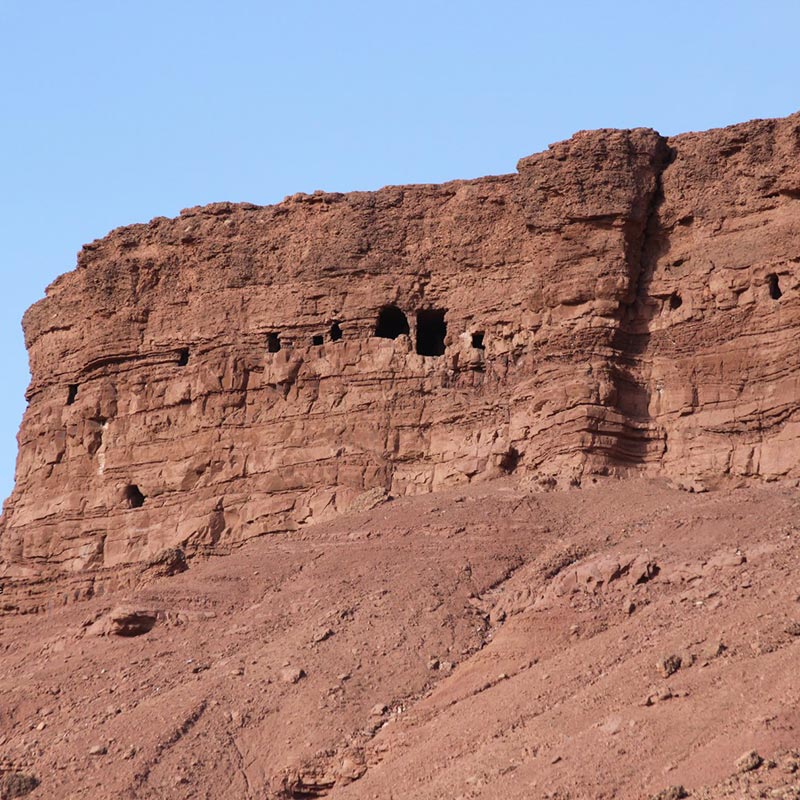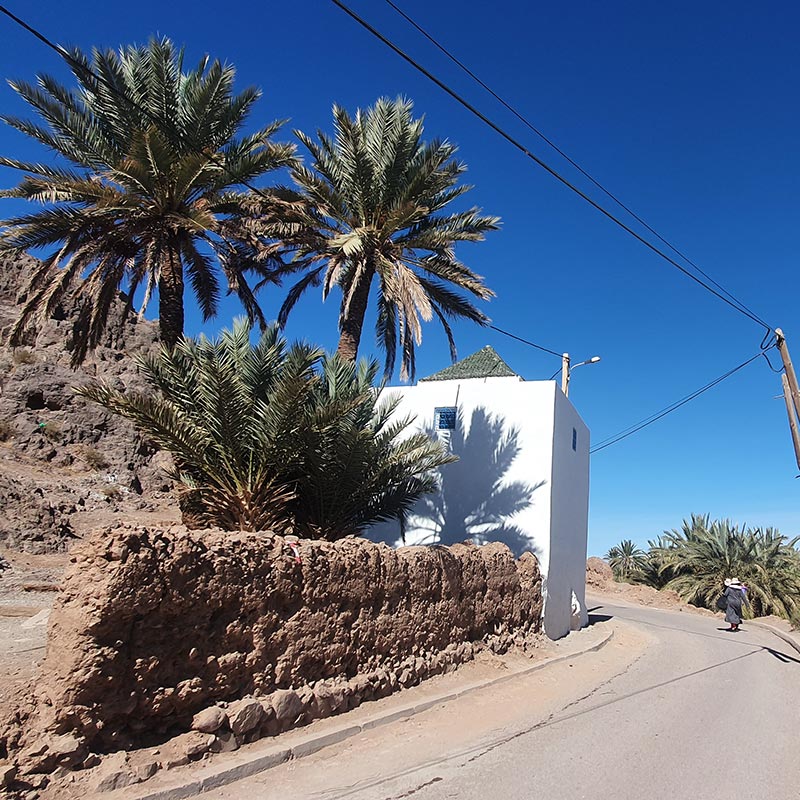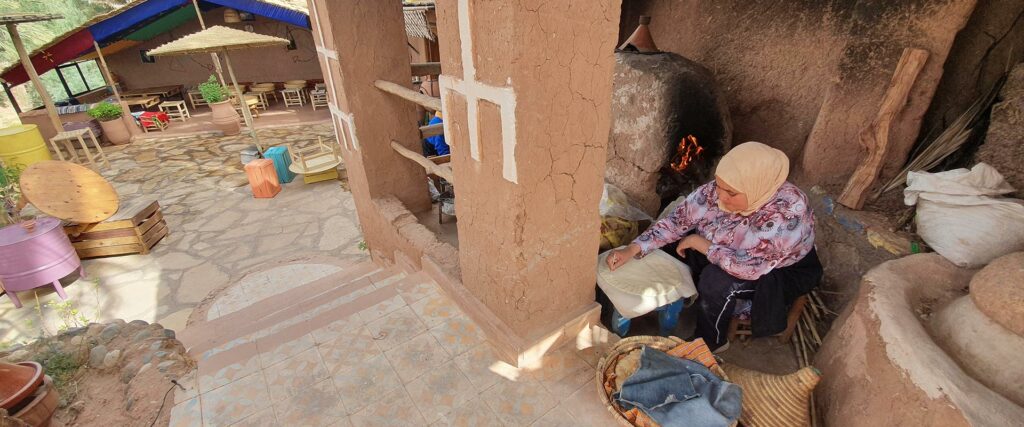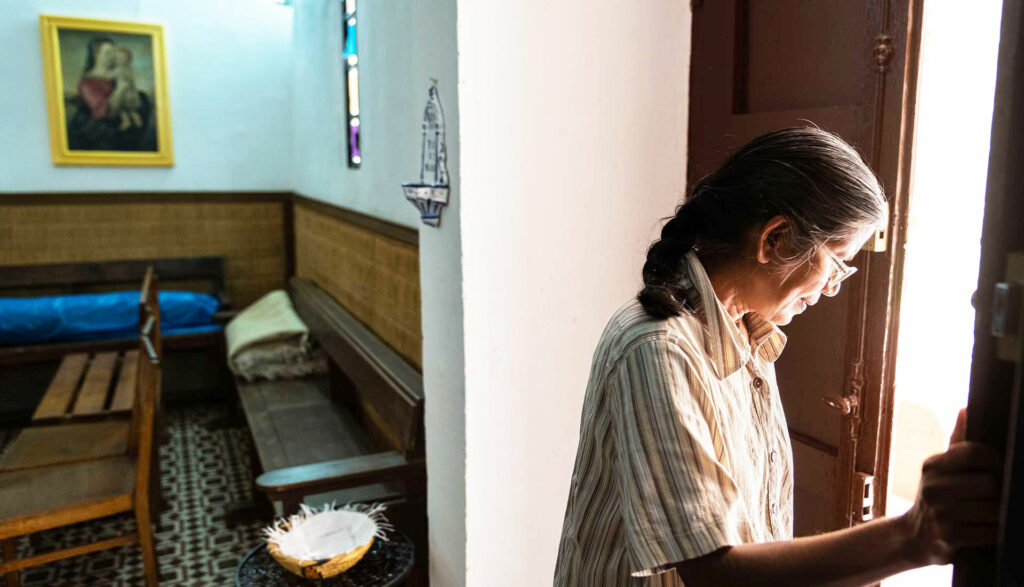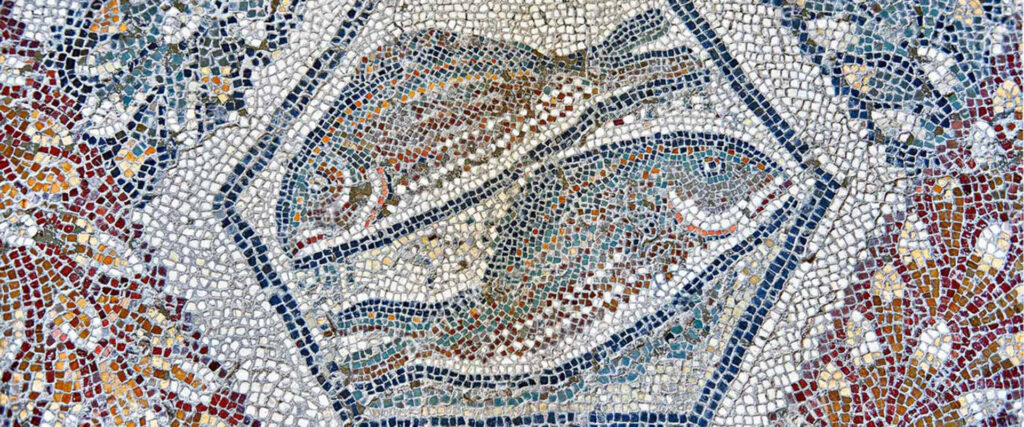To the north, the hill where the offices of the governor of Ouarzazate were located, still referred to as “the redoubt” as it was during the time of the French Protectorate, overlooks a few small neighborhoods gathered like a village. This was the center of Ouarzazate, traversed by a single avenue.
Further to the south, the Draa Valley fascinates with its splendor, its banks covered with date palms and lush gardens. The avenue and the valley form two parallel axes that traverse the hills and cliffs of Ouarzazate.

Adjacent to the burgeoning city center, a vast plateau served as a takeoff and landing point for small aircraft. This was the airport. As children, we felt a sense of pride seeing real planes from afar, coming to our place of residence.
Far off in the distance, a towering hill loomed on the horizon. It appeared to us in a blurred form, almost resembling a mirage. This was Tazakhte, with its troglodyte caves carved into its arid walls since ancient times, once serving as a natural refuge for inhabitants whose traces have long since vanished.
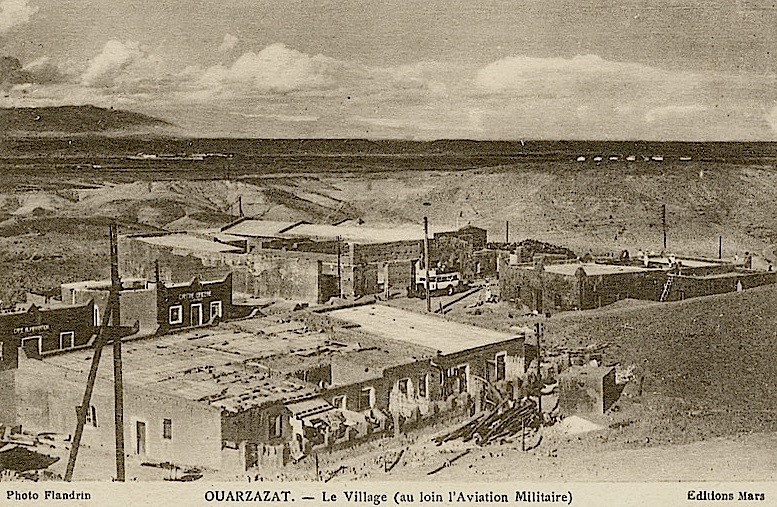
Tazakhte left a mythical imprint on our collective memory. It was indeed a place around which fantastical tales and fabulous beliefs were woven.
The origin of its name remains unknown. A source of unanswered questions, its mention stirred both fear and wonder in us, and its deep caverns were undeniably a place of adventure for our minds hungry for mysteries.
We were children back then. Ramadan was not for us a month of religious rituals, fasting, and prayer. It was a precious time for discovering these strange and unknown places.
As a group of friends, we often went on visits to Tazakhte, an obvious display of our daring, a form of bravado in the face of the unknown.
This frozen place was enveloped in an immutable silence. For us, it surely must have been inhabited by “djinn,” those supernatural creatures that populate the underworlds.
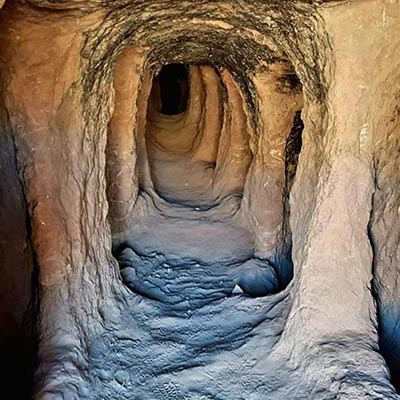

Before crossing its threshold, we prostrated ourselves reverently
We set out on foot to explore Tazakhte, braving the scorching heat to cover the few kilometers that separated us from our destination. Wearing makeshift plastic sandals, we traversed rocks and hills, crushing wild plants like Harmal, overturning stones, and scattering golden scorpions in our path.
As we approached the valley of the El-Maleh river and Tazakhte loomed closer, a terrible anxiety gripped us. Yet, we pretended to be brave to overcome this fear and continued our journey with confidence.
The entrance to the cave was a horizontal, flat slit. Before crossing its threshold, we prostrated ourselves reverently. Then, we crawled to enter this frightening world that engulfed us. Dust covered our bodies and scraped against the rocks as we progressed deeper into the place.
This journey through the dark labyrinth amplified our anxiety. Nevertheless, we persisted in advancing in the darkness. A terrifying silence prevailed, occasionally broken by the voices and whispers of our companions.
Finally, a glimmer of light brought hope to our hearts. This faint glow gradually dispelled the oppressive darkness and guided us towards the depths of the cave. Damp caves unfolded before our eyes. Galleries meticulously sculpted and rooted in the earth. Primitive chambers arranged at the bottom and overshadowed by a vast black veil resembling a flock of crows.
This legendary cave brought each of us back to our fetal state. It was as if Mother Earth was giving birth to us anew. She subjected us to the trial of adapting and surviving in our environment.
We then ascended towards the azure blue sky like the leaves of a fragile plant. We jostled each other like rosebuds with resolution and enthusiasm to fully enjoy this moment of jubilation.
The ritual of a return to the earth
With the innocence inherent in childhood, this pilgrimage to Tazakhte during the month of Ramadan was like the ritual of a return to the earth. And with our bodies covered in its dust and the friction against all its gravel, we experienced it as if it were tenderly welcoming us into its embrace.
This passion for thus going to pay homage to Tazakhte has forever dispelled from us the fear of the unknown and of invisible worlds. We entered into communion with this strange and unfathomable space that revealed its language to us, made of shapes, scents, and colors that we constantly questioned with wonder. Tazakhte revived contradictory feelings in us, refined a romantic character within us, and nurtured an appetite for surrealism.
Tazakhte, this Platonic cave, still defies oblivion today and resists the failures of memory. It still stands, ever enchanting, with its unexplored secrets preserved in its galleries and tunnels, since time immemorial, but which will always awaken in the visitor a thousand and one questions that remain unanswered.
